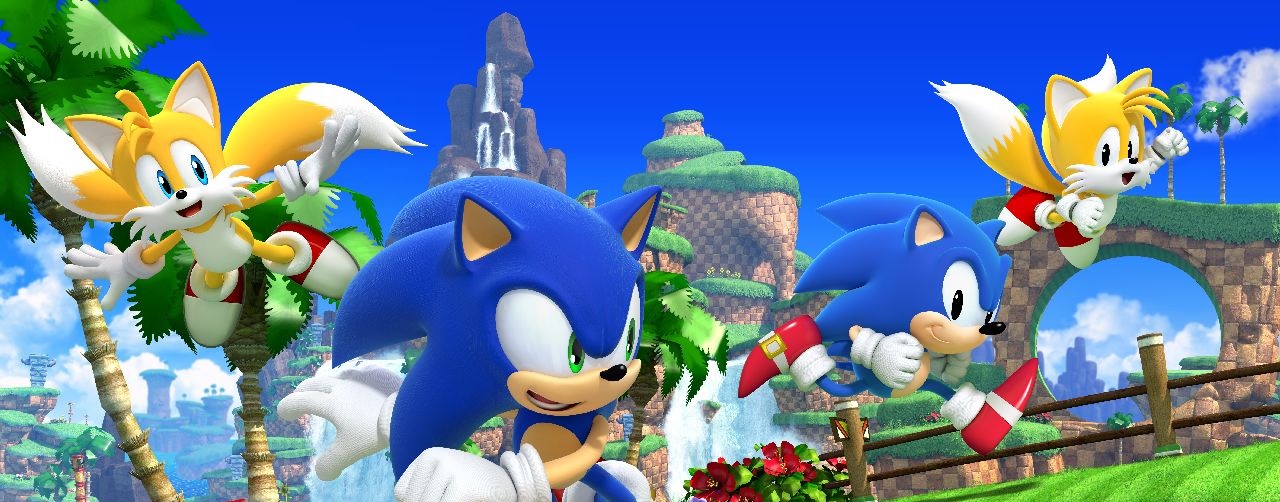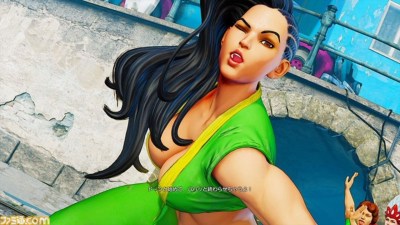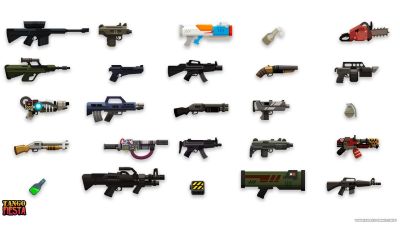Sonic is back in black! If you get that AC/DC reference, then you must be a little familiar with the 1990’s. Back in the 90s, everyone wanted a mascot for their company: Nintendo with their famous plumber, Ubisoft using good ol’ Rayman, Sony with Crash Bandicoot, and Sega with Sonic.
While other mascots faded away, Sonic and Mario remained - and boy, did they fight with all their might. At one point, Sonic was considered as big as Mario and did have the chance of overtaking the overly-obese plumber. However, the series stagnated due to a string of subpar releases (Shadow the Hedgehog, anyone?) before eventually reaching the point where Sonic’s public image was something to be ridiculed.
We never hear of brilliant Sonic games any more. Why? Simple: It’s because Sega could never master transplanting the series’ gameplay to the third dimension. With the PS1, N64, and Sega Saturn, everyone wanted to make the jump to 3D gaming, and the old 2D side-scrollers were now seen as inferior. Finding themselves left with no choice but to go along with the trend, Sega kept experimenting with the third dimension (notably with the sadly cancelled Sonic XTreme), but never seemed to discover a winning formula - and in doing so, left the series floundering.
Sonic became something of a has-been, a character who’d had his 15 minutes of fame in the old times. Mario reigned with all his gluttonous greed, whilst Sonic had to make money through horrendous cartoons and breakfast cereal tie-ins. Well, that time is over. Forget Sonic 2006, and definitely forget the atrocious Sonic Unleashed: there’s no more werewolf or love storylines. This is Sonic Generations, and it almost manages to make up for past failings.
For the first time in decades, I applaud Sega for giving Sonic fans the game they wanted. We wanted a contemporary 2D platforming with the retro feel; Sega has delivered that by rebuilding the classic gameplay in a 3D engine, while retaining the side-scrolling gameplay we all know and love. They even revert back to the original character design.
Next to the 2D levels, we also get 3D levels. Featuring the modern Sonic design and gameplay more reminiscent of the recent games, these 3D levels make me chuckle every time one comes up. I’m reminded of all the wrongs with the Sonic franchise. Don’t get me wrong: the 3D levels in Generations are fun, but they do show many faults - such as not being able to control Sonic’s movement with any degree of accuracy. You just have to blast through as best you can, and that gets annoying; these sections can largely be completed by simply pushing forward on the left analogue stick. That being said, the levels are at least beautiful to look at in motion. Soon, you forget about the shallow gameplay in these sections, because you’re too busy appreciating the amazing scenery.
I didn’t think they’d be able to pull it off, but the graphics and the set pieces (which you only run past/through) do add to the gameplay, creating an interesting feel to the game as a whole. The 2D levels require far more skill to complete, while the 3D ones become a blast of vivid scenery. This constant alternation benefits the game, keeping it feeling fresh throughout the experience.
However, the problems of the 3D Sonic games are still present, so they can’t be excused completely - frustration and annoyance does still occur.
The levels are broken down by eras. There’s a few levels inspired by the Genesis era of Sonic - Green Hill and Chemical Plant zones; a few levels from the Sonic Adventure era; we even get some from the utterly wretched Sonic The Hedgehog from 2006. If you’ve been a fan of the little blue hedgehog throughout his career, you’ll appreciate the nostalgia that comes with recognizing a familiar environment, setpiece or piece of music. From the moment you first see Green Hill zone in 3D and the Sonic 2006 levels in 2D, you’ll be hooked. Sega has rammed the game to the hilt with fan-service, and by and large, they’ve done a good job.
Whilst we’ve already mentioned the graphics, they bear some repeating. They are drop-dead gorgeous. Not only does every world look crisp, vibrant, and beautiful - but it’s also varied in art styles throughout every level. San Francisco – taken from Sonic Adventure - has its own charm compared to the classic Green Hill Zone, which contrasts with the almost apocalyptic levels inspired by the 2006 game.
Sega can’t match Nintendo’s awe-inspiring Super Mario Galaxy in terms of gameplay; but in the graphics department at least, Sonic Generations wins hands down.
The musical score is another neat touch, featuring remixes of old Sonic tunes alongside a few new additions. It’s fun playing through the Genesis-era levels and listening to the classic tunes, before switching to the J-pop songs found in the later levels. The variety on offer keeps the music feeling fresh, and you’ll find yourself humming away long after playing because they’ve become stuck in your head.
“The Best of Both Worlds” is a phrase I’d use to describe Sonic Generations. It brings back the few 3D levels we all loved in Sonic Unleashed, along with the 2D levels from the classic Sonic games. This game is now a bridge for both generations of Sonic fans – the older fans who remember the classic 2D gameplay of days gone by, and the newer fans who weren’t around back then and were instead raised on a diet of the 3D installments.
If there’s any serious issue, then it’s to be found in the length of the experience. Generations is extremely short, and that can’t be excused. 3 hours is unacceptable for any game that launches at full price. The side missions are also absolutely horrendous. Not even in my worst nightmare would I play them again. Generations would have benefited immensely from some more time trial options and a few extra levels, but Sega took the easy route, and built crappy side missions with Sonic’s unlovable friends that no one likes.
No one likes the stupid alligator, the freakin’ wannabe bee or that purple Barney ninja. The side missions are so mundane that I can’t emphasize it enough. Certain missions you have to walk for a distance, then wait for Knuckles to dig up coins, and then walk again. Soon, you’ll be asking yourself why you’re wasting your life on these sections, and will just skip them altogether - they all ask you to perform tasks that are incredibly boring. Sega may have earned back some of the respect it’s lost over the years, but they seemingly just couldn’t help themselves. Like the game-design equivalent of Tourette’s, they just keep putting in mechanics to their Sonic games which do little more than dilute the experience.
One final point worth mentioning is that while the boss fights against Robotnik/Eggman aren’t especially difficult, they can sometimes frustrate due to a wonky camera that likes to pick awkward angles at the worst possible moment. These fights never completely threaten to sour your experience with the game – and like everything else about Generations, they’re fairly brief – but it’s something worth noting.
If I were to compare Generations to other platformers such as Rayman Origins, I would pick Rayman over Sonic any day. However, there is a unique feel to Sonic, and if someone wants the speed of the old hedgehog, this is a brilliant way of getting it. It’s attractive, it sounds good, and it’s (largely) fun to play. It’s just a shame that it’ll be over before you know it.



